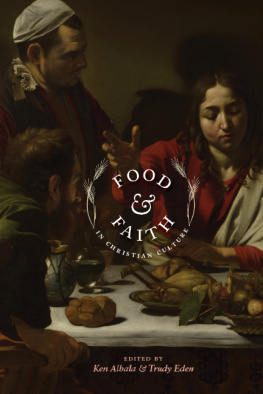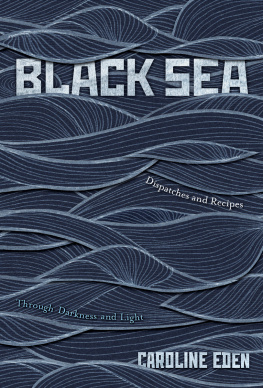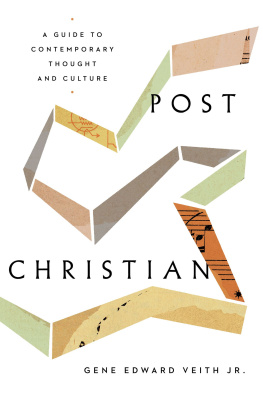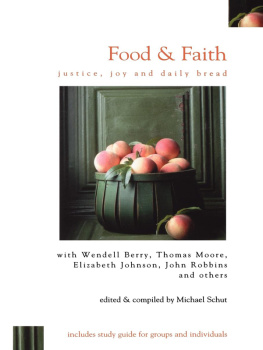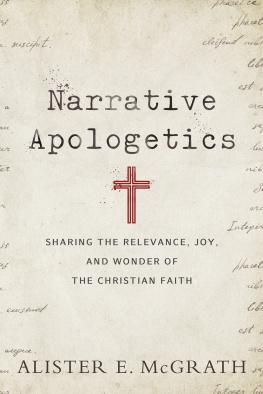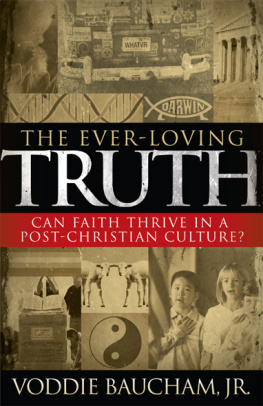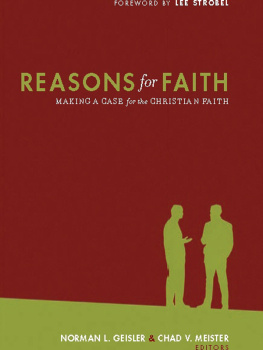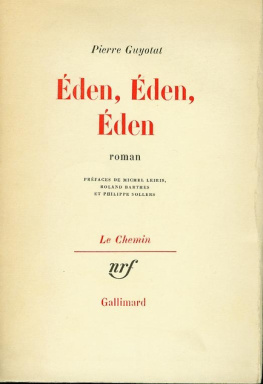Eden - Food and Faith in Christian Culture
Here you can read online Eden - Food and Faith in Christian Culture full text of the book (entire story) in english for free. Download pdf and epub, get meaning, cover and reviews about this ebook. City: New York;Chichester, year: 2011;2011, publisher: Columbia University Press, genre: Religion. Description of the work, (preface) as well as reviews are available. Best literature library LitArk.com created for fans of good reading and offers a wide selection of genres:
Romance novel
Science fiction
Adventure
Detective
Science
History
Home and family
Prose
Art
Politics
Computer
Non-fiction
Religion
Business
Children
Humor
Choose a favorite category and find really read worthwhile books. Enjoy immersion in the world of imagination, feel the emotions of the characters or learn something new for yourself, make an fascinating discovery.
Food and Faith in Christian Culture: summary, description and annotation
We offer to read an annotation, description, summary or preface (depends on what the author of the book "Food and Faith in Christian Culture" wrote himself). If you haven't found the necessary information about the book — write in the comments, we will try to find it.
Eden: author's other books
Who wrote Food and Faith in Christian Culture? Find out the surname, the name of the author of the book and a list of all author's works by series.
Food and Faith in Christian Culture — read online for free the complete book (whole text) full work
Below is the text of the book, divided by pages. System saving the place of the last page read, allows you to conveniently read the book "Food and Faith in Christian Culture" online for free, without having to search again every time where you left off. Put a bookmark, and you can go to the page where you finished reading at any time.
Font size:
Interval:
Bookmark:
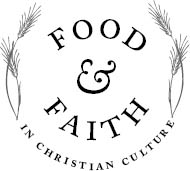
ARTS AND TRADITIONS OF THE TABLE
Perspectives on Culinary History
ARTS AND TRADITIONS OF THE TABLE:
Perspectives on Culinary History
ALAN SONNENFELD, SERIES EDITOR
Salt: Grain of Life, Pierre Laszlo, translated by Mary Beth Mader
Culture of the Fork, Giovanni Rebora,
translated by Albert Sonnenfeld
French Gastronomy: The History and Geography of a Passion,
Jean-Robert Pitte, translated by Jody Gladding
Pasta: The Story of a Universal Food, Silvano Serventi
and Franoise Sabban, translated by Antony Shugar
Slow Food: The Case for Taste, Carlo Petrini, translated by William McCuaig
Italian Cuisine: A Cultural History, Alberto Capatti and Massimo
Montanari, translated by ine OHealy
British Food: An Extraordinary Thousand Years of History, Colin Spencer
A Revolution in Eating: How the Quest for Food Shaped America,
James E. McWilliams
Sacred Cow, Mad Cow: A History of Food Fears,
Madeleine Ferrires, translated by Jody Gladding
Molecular Gastronomy: Exploring the Science of Flavor,
Herv This, translated by M.B. DeBevoise
Food Is Culture, Massimo Montanari,
translated by Albert Sonnenfeld
Kitchen Mysteries: Revealing the Science of Cooking,
Herv This, translated by Jody Gladding
Hog and Hominy: Soul Food from Africa to America,
Frederick Douglass Opie
Gastropolis: Food and New York City, edited by Annie Hauck-Lawson and Jonathan
Deutsch
Building a Meal: From Molecular Gastronomy to Culinary
Constructivism, Herv This, translated by M.B. DeBevoise
Eating History: Thirty Turning Points in the Making of American Cuisine, Andrew F. Smith
The Science of the Oven, Herv This, translated by Jody Gladding
Pomodoro! A History of the Tomato in Italy, David Gentilcore
Cheese, Pears, and History in a Proverb,
Massimo Montanari, translated by Beth Archer Brombert
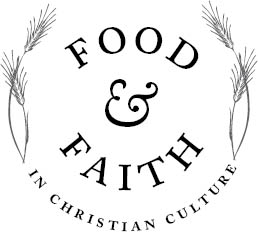
EDITED BY
Ken Albala & Trudy Eden
Columbia University Press New York

Columbia University Press
Publishers Since 1893
New York Chichester, West Sussex
cup.columbia.edu
Copyright 2011 Columbia University Press
All rights reserved
E-ISBN: 978-0-231-52079-9
Library of Congress Cataloging-in-Publication Data
Food and faith in Christian culture / edited by Ken Albala and Trudy Eden.
p. cm. (Arts and traditions of the table)
Includes bibliographical references (p. ) and index.
ISBN 978-0-231-14996-9 (cloth: alk. paper)ISBN 978-0-231-14997-6 (pbk.: alk. paper)ISBN 978-0-231-52079-9 (e-book)
1. FoodReligious aspectsChristianityHistory. 2. Food habitsHistory. 3. Dinners and diningReligious aspectsChristianityHistory. I. Albala, Ken, 1964II. Eden, Trudy.
BR115.N87F655 2011
248.4dc23
2011020718
Casebound editions of Columbia University Press books are printed
on permanent and durable acid-free paper.
Printed in the United States of America
c 10 9 8 7 6 5 4 3 2 1
p 10 9 8 7 6 5 4 3 2 1
A Columbia University Press E-Book.
CUP would be pleased to hear about your reading experience with this e-book at .
References to Internet Web sites (URLs) were accurate at the time of writing. Neither the author nor Columbia University Press is responsible for Web sites that may have expired or changed since the book was prepared.


Trudy Eden
For many people, the phrase the lords supper may bring forth an image of the Last Supper (such as fifteenth-century mural by Leonardo da Vinci), with Jesus sitting at the center of a dining table and his twelve disciples seated on either side of him. The men are about to share a meal. This images evokes the powerful story of the last hours of Christs life, depicting the first Eucharist and contrasting the commensal solidarity of those seated at the table with the impending betrayal by one among the group, Judas Isacariot. Betrayal and the love and forgiveness with which Jesus responded to it are, of course, at the center of Christianity. So, too, is the Eucharist. As such, they have been the subject of much study by a wide variety of people, not the least of whom are scholars of numerous academic disciplines.
Another aspect of this image, that of the table laid for a meal, has received little scholarly attention. Yet food and the act of eating, particularly group eating, are potent forces in human culture. No one in any culture sits at a table to share a meal without a complex set of understandings that influence their behavior at the table as well as away from it. It is these understandings and behaviors in the context of Christian culture that this volume seeks. With its focus firmly on the meal, its antecedents, and its consequences, this collection asks the central question: Have Christians used food and its associative practices to shape, strengthen, and/or spread their faith? The answer is a resounding yes. The following essays show that Christians have done so in an astonishing variety of ways from the fourteenth century to the present and around the world. These practices, while retaining a definite Christian character, exhibit a great deal of flexibility. Their rich diversity distinguishes Christian food customs from the more codified traditions of other major religions such as Judaism, Islam, Hinduism, or Buddhism. Food has been, and still is, useful to and powerful for Christians.
This wide array of people, places, and foods in time is woven together by four underlying themes: commensality, fasting, the sacrament, and bodily health. Although modestly defined as the habit of eating together, commensality entails much more. When a group of people sit together and eat the same food, they create or strengthen physical and social bonds. The type and strength of the bonds varies depending on the circumstances of the meal. Physical bonds arise when people eat the same food, which their bodies metabolize and turn into flesh. They become, if only in part and only temporarily, made one and the same. In earlier times and places, this distinction was important, as it underlay human identity.
Social bonds develop for different reasons. In the premodern and early modern periods in England, for example, people often didnt just eat together. Depending on the size and nature of the group, eaters were often arranged together to eat. The root word commensal means eating at or pertaining to the same table. Soldiers, for example, ate with men of the same rank. Nonmilitary diners at banquets sat at tables with people of the same social rank. In both cases the different tables received different kinds and amounts of foods. Commensality, then, ordered as well as bound social groups. Everyone who attended a meal bonded with the larger group but were divided and joined to their smaller group (called the mess) at the same time by the acts of eating the same food and of socializing during the meal.
Commensal has a third definition, as a noun, that developed in the nineteenth century but most certainly has roots in human dining customs. A commensal is an animal or plant which is attached to another and shares its food but is not a parasite. When applied to human activity, this definition suggests the strongest and healthiest of communities, for it is one thing to take from a group and quite another to share with it.
Next pageFont size:
Interval:
Bookmark:
Similar books «Food and Faith in Christian Culture»
Look at similar books to Food and Faith in Christian Culture. We have selected literature similar in name and meaning in the hope of providing readers with more options to find new, interesting, not yet read works.
Discussion, reviews of the book Food and Faith in Christian Culture and just readers' own opinions. Leave your comments, write what you think about the work, its meaning or the main characters. Specify what exactly you liked and what you didn't like, and why you think so.

